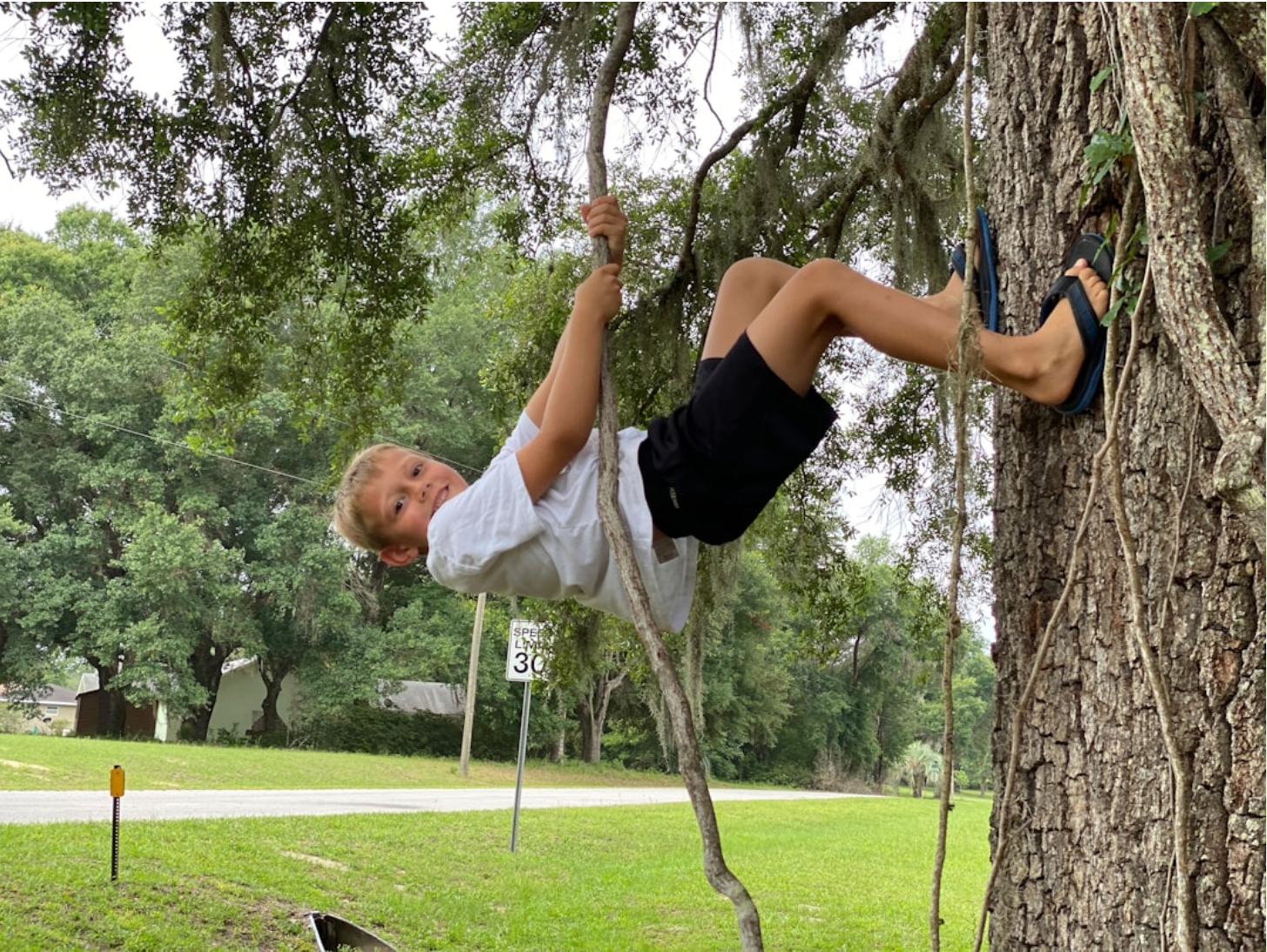12 Lessons Homeschoolers Need to UNLearn

Sometimes unlearning is the path to real learning
I started homeschooling my oldest son to give him a joyful, child-centered learning experience.
The opposite of what he’d had in preschool.
I’d pulled him out of a Montessori preschool when the teacher, in a very non-Montessori way, started pressuring him to read and reacting negatively to his efforts.
In a shockingly short time, he had shut down and become sad, remote.
When we started homeschooling, I was focused on how important it was for me to turn things around and help him regain his confidence and love of learning.
We went through a process of ‘deschooling’—learning through play, and not worrying about formal lessons—until he regained his former happiness and exuberance.
Gradually we started ‘schooling.’
I felt deeply rooted in my beliefs and child-centered philosophy and how I would ‘do school’.
What I didn’t realize, was how deeply rooted my own school experiences were and how much they affected my thinking.
I was the one who needed to ‘deschool.’ And let go of limiting beliefs.
I launched into projects with my son, learning through play, doing math with manipulatives…
But fears and worries cropped up around the edges of my thoughts. What if I wasn’t doing a good enough job? What about meeting standards, testing, getting into a good college?
I pushed those thoughts away. He was young. We had lots of time. We’d learn as we went.
We found a rhythm to school that worked for all three of my kids who were 5, 3, and 1 at that time. We did activities together. Gradually reading and writing naturally became a part of our daily ‘school.’
I learned to create a child-centered approach that worked for us.
But the voices in my head plagued me. What if I should test them more, give them worksheet assignments, spelling and grammar lessons, grades?
I didn’t agree with it.
I had to rediscover my love of learning.
First I had to learn how to Unlearn what institutional schooling had drilled into me so that I could find the confidence to go all in with my approach.
Here are the 12 key lessons I had to unlearn to create a thriving homeschooling environment:
1-The True Nature of SchoolingI had to unlearn the double-sided idea that *all* learning happens ‘in school’ and that school is specifically for academic learning.
Conventional schooling often focuses heavily on form, tests, compliance, structure, and systematization, often at the expense of learning.
It’s an unnecessary boundary we can let go of.
Learning happens… all around us.
It happens without the need for boundaries, compliance, and institutions.
Kids in homeschool are free to focus on learning, at their pace, in a way that works best for them.
2-Rethinking Educational ResourcesWhen I was a kid, I learned through textbooks.
Even though I had a strong belief in real-life learning, it was hard for me to let go of the idea that ‘the facts’ were to be found in textbooks or that I should prioritize book learning over other types of learning.
In homeschooling, I didn’t avoid textbooks (and used them often when my kids were older, say grades 8-12).
Instead, I found a balance between multiple resources, including online resources, real-world experiences, interactive projects, original sources, museums, and libraries.
It was liberating, but also an important life lesson for my kids to learn: We can learn from multiple sources, AND question the source, assess the validity of the source, the context, and the point of view of the author.
This approach taught them so much more than just memorizing information from a textbook that is perceived as having ‘the only’ accurate information on a given topic.
3-Blurring the Lines Between School and LifeEven though I didn’t consciously agree with the artificial separation between school and life, I had to let go of the feeling that ‘school learning’ happened with formal lessons at a desk or table.
I did let it go. We had more organic learning experiences because of it.
Learning is not confined to the classroom; it happens everywhere and is integrated with daily life.
Kids are learning from every experience and conversation they have, everything they observe. Their learning is so much richer when we don’t make a false divide.
As homeschool parents, once we see everything as a learning moment, our way of mentoring our kids shifts to a more organic style of engagement.
We don’t have to announce each thing as a ‘teaching moment,’ we can simply have conversations, express our interest, and curiosity, and talk with our kids.
We don’t have to define learning as only what happens ‘in school’ or when kids sit at desks.
Learning is a fluid state that exists when kids are curious.
4-Prioritizing Life Over School
Another feeling I unlearned? The idea that formal education is more important than life experiences.
The learning opportunities found in everyday activities can be just as educational, if not more so.
I imagine a lot of you share the same conditioning.
I had a clear ideology that focused on life learning. But it was still hard to let go of the mindset, “I should focus on the list of formal curriculum standards, at the expense of real-world learning experiences.”
It is a limiting belief that we can let go of.
The real educational potential is in experiential learning.
Cooking with your kids, taking them to the farmer’s market or grocery shopping, helping them observe, and testing out ideas are all valid forms of learning.
We talked with local farmers on Saturday mornings. My kids learned about local farms, organic farming, farm-to-table cooking, the food industry, and seasonal vegetables.
We also did math and writing at the table.
The difference was, all learning blended with living.
5-Homeschooling FlexibilityThe belief that I needed to replicate a traditional school environment at home was something I had to let go of too.
Homeschooling offers the flexibility to create a learning environment that is tailored to kids’ needs, interests, and pace.
There is no reason kids need to sit still in chairs for X number of hours per day, something even adults find hard to do. They can learn curled up on the couch reading, while cooking, or outside.
We can create flexible learning spaces, learning times, and pacing for our kids. When you remove the busywork and unnecessary time spent corralling large numbers of kids in institutional learning, learning happens much faster in less time.
Having flexibility is freeing for everyone.
6-Adapting the PaceI learned the importance of changing the pace of education to fit each of my kids’ needs.
If a topic required more time and attention, I adjusted our schedule.
As I homeschooled my three kids, I also taught several other people’s kids.
No one kid was the same or at the same place by a certain age.
We can meet our kids where they are, with the simple goal of helping them learn.
We don’t need to push kids to align with external, institutional standards and pacing that may not work well for our kids.
Each of my three kids has a different learning style, different interests, and aptitudes.
Once I got over the idea that I had to ‘stay on track’ it became a lot easier.
Most of the time they were well ahead of the school curriculum and when we did take the annual, nationally standardized Iowa Skills Test, they scored above grade level.
Why? It’s not about being ‘super smart,’ it is because kids have an easier time learning at their own pace in ways that work for them.
7-Embracing AutonomyHomeschooling is permissionless—decisions about what and how to learn rest with us, the parents.
Unlearning the requirement for external approval was empowering for me and allowed me to focus on—my kids.
While I formally registered our homeschool with the state of NC and complied with all state requirements, we did not need permission to choose our curriculum, take field trips, or travel.
We could choose which books, texts, and sources of information we wanted to use.
We could spend the afternoon at the library, the arboretum, the museum, traipsing through the woods, or reading. We could do (and did) chemistry experiments or test out physics theories, say by building a mini catapult.
8-Reevaluating AssessmentI moved away from the belief that tests are the only way to assess learning.
Instead, I opted for mastery learning.
My kids worked on math problems or science concepts, writing, etc., until they gained a level of mastery over the subject.
We didn’t test, assign grades, and move on.
We focused on learning.
I could see how my kids were doing by using alternative assessments, like projects, presentations, and discussions. I could see their work.
I didn’t need to compare my kids to anyone else’s or to standardized tests.
9-Curriculum CustomizationI used assessments as a way of teaching them self-reflection, trial, and error, to be fearless in challenging themselves, and in seeing ‘mistakes’ as part of a constructive learning process rather than a negative one.
It was a huge relief to not feel bound to a standardized curriculum.
I ensured my kids learned the basics well.
But I also tailored our learning to my kids’ interests.
One kid loved everything about architecture and spent a lot of time studying Frank Lloyd Wright, the great architectural works of the world, and learned to build and design in Minecraft.
Another kid loved bees and learned how to keep bees and studied their habitats in depth.
Another loved learning about fish and at a young age started a blog dedicated to ichthyology, a word he loved to use.
10-Personalized StandardsI unlearned the need to strictly adhere to conventional standards to keep my kids ‘on track.’
Our goals and milestones centered on discovering answers to questions and completing projects. They had almost nothing to do with external standards.
We focused on mastering skills.
11-Learning Through Play and ExplorationI had read books on Montessori and Waldorf approaches; they helped me let go of the idea that learning happens ‘in school.’
I decided to learn from my kids and by observing how they learned.
I rediscovered play and what a valuable form of learning it is. It sparks endless creativity and curiosity.
-
I embraced learning through play and life learning.
-
I let go of the feeling that I wasn’t ‘properly educating’ my kids.
-
And we learned far more and became invested in our learning.
What learning through play looked like
-
Building projects with cardboard boxes and packing tubes and blocks and duct tape became physics experiments.
-
Cooking and dividing snacks became math lessons, often sparking serious debate on the best way to divide, who knew their multiplication tables the best, or fractions.
-
Art projects became discussions about color theory, viscosity, and art styles from Monet to Jackson Pollack.
Play unleashed their creative—and critical—thinking skills.
12-Final Thoughts: The Role of the ‘Educator’
Finally, I had to unlearn my preconceived notions about my role as a homeschool parent/teacher.
In a homeschool setting, I am a guide, facilitator, and co-learner, rather than just a teacher.
I had to learn the obvious:
My role as mom, mentor, and co-learner—a role that I’d had with each child from birth—continued K-12.
I did not need to step into a formal ‘teacher’ role and draw a line between me and them, school and life, teacher and mom.
I could be myself and mom and mentor and co-learner all together at the same time.
And now that they’re grown young adults, I get to add friend to the list.
It’s one of the greatest gifts of my life.
Once I let go of a long list of ‘shoulds’ about what school is, what learning is, and education, and where and how it happens, I could focus on my kids as people without worry or guilt about ‘doing it right.’
We did school in the way that worked for us.
My kids are well-educated. They can think.
They still have a love of learning. And never had to fit their ideas or their sense of self into a box someone else created.
It took me effort to consciously unlearn fixed ideas about education.
I unlearned the restrictive beliefs and practices ingrained by traditional schooling.
And once I let them go, I gained more confidence, creativity, and a new joy in learning with and through my kids.
Together we generated endless ideas, just because we didn’t shut them out or put them in a box, we explored them.
Each of us, as homeschool parents, likely has lingering restrictive beliefs.
Once we unlearn styles of teaching and mindsets around learning that we don’t want to pass on to our kids, we are free to rediscover our own love of learning.
We are free to find ways of educating our kids that work for them.
Education extends far beyond the conventional classroom walls.
We can all learn how to teach our kids and help them learn how to learn.
Let's view education not as a one-size-fits-all model but as a flexible, adaptive, child-centered approach that engages our kids in learning.
0 comments


